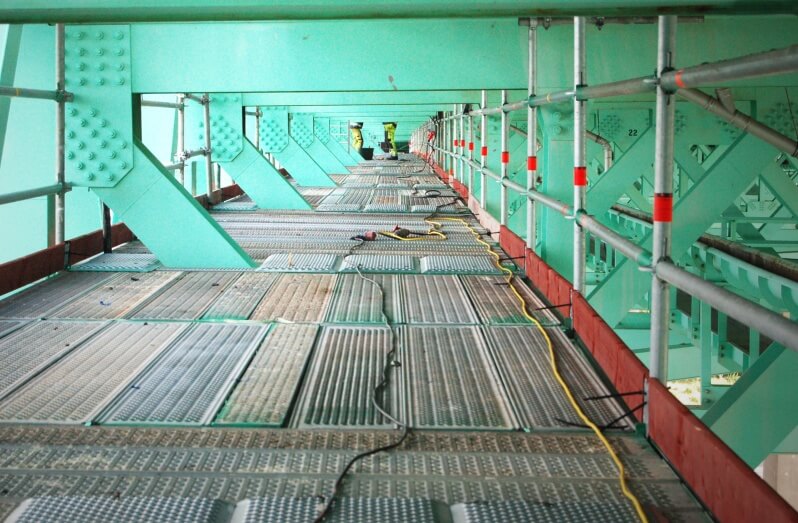The structure business is encountering an extraordinary transformation. With worldwide infrastructure spending reaching $2.6 trillion annually, the backbone encouraging these enormous tasks has be much more critical than ever. Advanced scaffolding infrastructure bridges (byggnadsställningar infrastruktur broar) systems are no further only temporary structures—they're strategic resources that will produce or separate task timelines and budgets.
Recent industry data shows that infrastructure projects employing contemporary scaffolding answers total 40% quicker than those relying on mainstream methods. That dramatic improvement stems from increased accessibility, structured security methods, and improved workflow management that today's scaffolding technologies deliver.
Market Trends Reshaping Scaffolding Demand
Infrastructure preservation dominates scaffolding purposes, addressing 60% of whole industry usage. That shift shows a vital reality: ageing infrastructure across created countries involves extensive reconstruction work. Bridges created through the building growth of the 1960s and 1970s now need comprehensive maintenance applications to keep safe and functional.

The hire scaffolding market has surged, rising 8.2% annually as construction companies prioritize operational flexibility around money investment. Little to moderate technicians benefit somewhat from rental designs, opening cutting-edge safety technologies without substantial upfront costs.
Digital integration is revolutionizing scaffolding operations. Tasks incorporating digital preparing tools record 25% less security situations and achieve 30% quicker setup situations in comparison to standard preparing approaches. That technical growth allows project managers to imagine complicated installations before crews arrive on-site.
Safety Statistics Drive Innovation
Workplace security remains the primary driver for scaffolding innovation. Fall-related situations take into account 33% of all structure fatalities, making trusted scaffolding programs required for guarding workers operating at height.
Contemporary scaffolding technologies have achieved a 45% lowering of fall situations compared to fundamental alternatives. That development results from sophisticated guardrail techniques, improved system stability, and better integration with personal protective equipment. Insurance businesses identify these safety changes, offering 20% decrease premiums for jobs applying qualified scaffolding systems.
Infrastructure Categories Driving Growth
Link maintenance projects eat 35% of scaffolding assets, displaying the important require to maintain transport infrastructure while minimizing traffic disruption. Specific connection accessibility programs permit preservation crews to function safely while maintaining roadways functional all through repairs.
High-rise developing maintenance shows 28% of scaffolding applications. Urban thickness increases get need for scaffolding options that purpose successfully in limited spots while sustaining rigid safety standards. These programs must navigate complicated urban situations while giving protected usage of developing exteriors.
Industrial facility maintenance involves 22% of scaffolding capacity, promoting petrochemical crops, energy era facilities, and production operations where downtime expenses tens of thousands of pounds per hour. These purposes need specific scaffolding that could resist harsh industrial environments while giving safe use of important equipment.
Economic Impact on Project Outcomes
Projects applying reliable scaffolding options record 15% lower over all fees despite higher preliminary equipment expenses. These savings appear from decreased labor demands, fewer safety-related delays, and accelerated completion schedules that reduce expense costs.
Weather-resistant scaffolding methods expand functioning periods by approximately six days annually in upper climates. That extension gives significant financial advantages for technicians handling seasonal construction schedules, letting productive perform all through usually demanding temperature conditions.

Future Infrastructure Investment Landscape
Government infrastructure legislation totaling $1.2 billion over another decade can maintain strong need for scaffolding solutions. This enormous investment stresses mostly on maintenance and modernization of active infrastructure rather than new structure, producing regular demand for accessibility solutions.
Sustainable scaffolding components are gaining traction, with 18% of important projects today specifying environmentally friendly options. That trend aligns with broader construction market sustainability initiatives and increasingly stringent government environmental requirements.
The scaffolding business remains adapting to meet up rising infrastructure demands while prioritizing worker safety and task efficiency. Construction companies that spend money on trusted scaffolding partners position themselves strategically for the infrastructure possibilities forward, ensuring they can offer tasks properly, effortlessly, and profitably within an significantly aggressive market.
